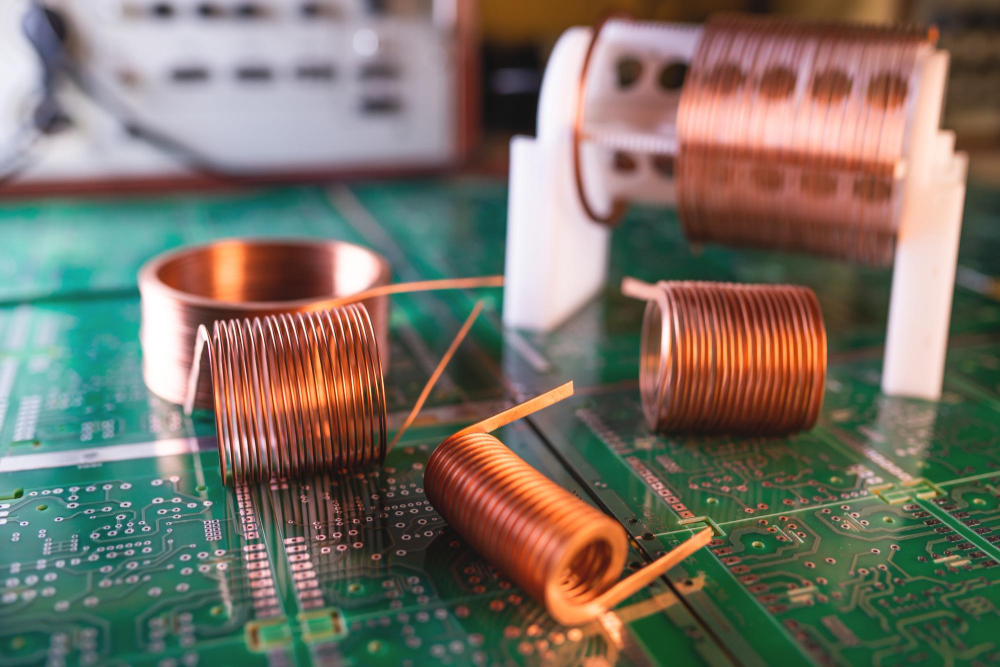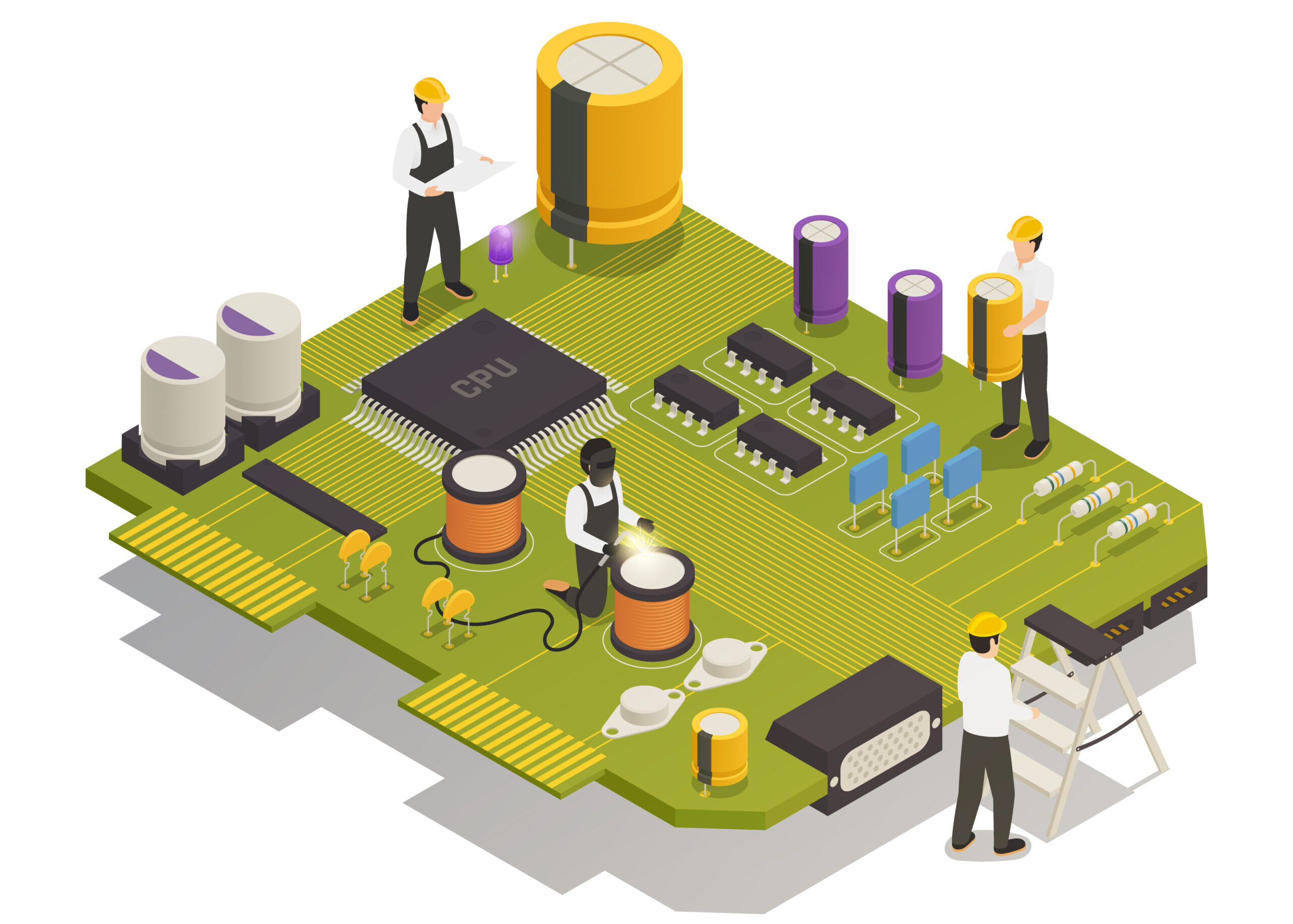Tips to Enhance the Performance of Power Inductors
Power Inductors are passive electronic components that store energy by creating magnetic fields with tightly coiled conductive wire coils.
Characteristics
Power inductors are an indispensable component in DC-DC converters and other power supply circuits, serving to store energy and filter EMI noise while offering lower signal loss capability and greater power handling capacity than competing components.
To ensure the proper functioning of these devices, designers must pay special attention to their voltage endurance and current ripple characteristics.
Power inductors’ characteristics vary based on load size and frequency. Copper and iron losses are two common forms of loss that cause temperature increases; to minimize them, select an inductor with low core loss at high frequencies.
DC resistance (Rdc) of power inductors is often the key factor governing their efficiency, so reducing this value using thinner wire or greater cross-sectional area is possible but will decrease inductance significantly.
Designers must ensure a large reduction in inductance by selecting an appropriate peak current rating for the device. This value acts as a safeguard, protecting from overheating damage while reflecting maximum current flow through it.
Power inductors use their rated current to indicate the maximum current that can be transmitted without reaching magnetic saturation, determined by both DC superposition characteristic maximum allowed currents and maximum allowable temperature rise limits. These power inductors generate their magnetic field through the rotation of domains within their core materials. As the magnetic field shifts, these domains must change direction – creating what is known as core loss.
Inductors come in both shielded and unshielded versions.
Shielded power inductors are commonly used in applications requiring high inductance at high frequencies; unshielded inductors can be found more commonly at lower frequencies with more stable currents.
Shielded and unshielded versions differ in terms of DCR (DC resistance) values and temperature coefficients.
Applications
Power inductors serve two primary purposes in an electronic circuit: they store energy in magnetic fields during active periods and deliver it to loads during off-peak periods, via Lenz’s Law.
Current flows through inductors when current is applied across their terminals, with its direction determined by changing magnetic fields within their core. When this change in field direction is interrupted or reversed, inductors generate a voltage across their terminals when current flows through, and the direction is determined by these changing magnetic fields.
Should that field shift change be interrupted or reversed then this current will quickly increase in speed producing a high voltage across their terminals sufficient to cause sparking that can endanger both the circuit and the user alike.
Inductors come in various sizes and shapes to suit specific applications.
They are available in both wire-wound and multilayer designs with either ferrite or metallic core materials for optimal design. Your choice of core material also impacts how it performs; low permeability results in lower inductance values while higher permeabilities support greater inductance at higher frequencies.
Power inductors are ubiquitous across electronic devices, from cell phones and laptops to automotive DC-DC converters.
When selecting a power inductor, it is essential to take note of its inductance value, DC superimposition characteristic, temperature characteristic, and leakage flux properties.
Ideal power inductors must not saturate during peak application current and be designed to handle this high current without overheating or short-circuiting. You can click the link: https://en.wiktionary.org/wiki/short_circuit to learn more about short-circuiting.
Specifications typically provide limits on current to reach magnetic saturation as well as temperature rise limits; using an inductor with gradual magnetic saturation characteristics will help avoid sudden drops in inductance.
Copper loss, or the amount of energy lost through magnetic losses in its core and windings, should also be taken into consideration when selecting a power inductor for any application.
Materials
Power inductors have long been used in electronic devices to convert DC input voltage into DC output current. Their purpose is to maintain inductance while current passes through, with low resistance characteristics; hence they require durable materials capable of handling sufficient current while also having energy storage properties.
A power inductor consists of a coil of conducting material, typically insulated copper wire, wrapped around either an air-core inductor made of plastic (called an air-core inductor), or an iron core made of ferromagnetic metal alloy (known as ferrite or iron core power inductor).
The magnetic field created by its magnetic core increases inductance – defined as the product of magnetic permeability and winding ratio. You can click here to learn more.
The core is designed to prevent eddy currents to limit energy losses in an inductor, similar to how transformers work. This is done using laminations of electrical steel sheets arranged parallel to the magnetic field and with an insulating coating applied over their surfaces.
Soft ferrite is often preferred for cores above audio frequencies as it does not cause as great an energy drain as ordinary iron alloys at these higher frequencies.
Small power inductors come in the form of molded cases designed to mimic resistors, easily identifiable with an ohmmeter. These inductors usually feature either a plain or ferrite core and are ideal for applications requiring small sizes with low resistance values.
Core material choices play a pivotal role in choosing an inductor for any application, which should be taken into consideration when choosing one. Ferrite and ceramic cores are common choices.
Design
Power inductors play an integral part in circuit design. They store energy efficiently while also ensuring low core losses for efficient power conversion. Unfortunately, designing an inductor can be a complex endeavor that must consider many variables.
First, when selecting a power inductor, it is important to pay close attention to its DC resistance. A power inductor with high DC resistance will result in excessive current flow and heat production which can eventually cause premature device failure. When specifying one, ensure that its DC resistance falls below its maximum operating frequency.
Finally, when choosing a power inductor for your design, it is crucial to take note of its size and dimensions. This will ensure it fits appropriately within your device while considering any associated terminals like wire leads, turrets, and lugs.


















